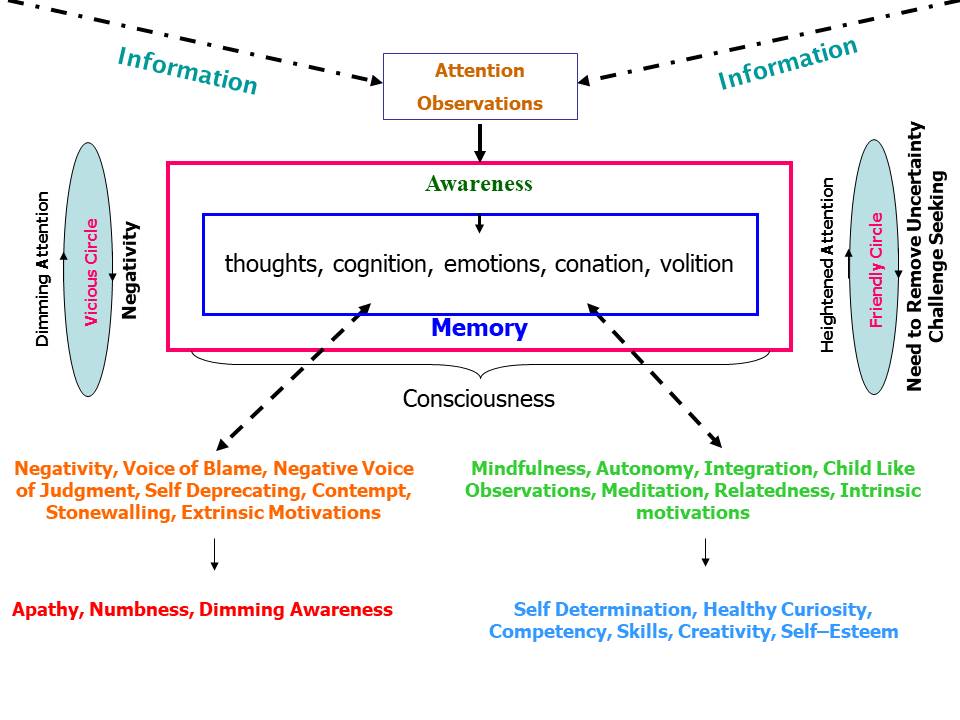Why is the Feel of “Flow” so Joyful?
Every time we achieve strong purification, concentration, attention, and insights—whether through meditation, learning a dance, or even rock climbing—we achieve some form of unification or connection through our creativity. This unification might initially be a simple form between mind and body, and then extend to the object of passion. If the object of passion is emptiness (meditation), then a strong feeling of nirvana, vastness, and infinite space is achieved. If the object of passion is a bicycle, a surfboard, or dance, then the unification or connection extends to that object.
In all these processes, the mind lets go and moves with the Flow of the moment (focusing on the present), which becomes imagery, a doorway to another state of being—boundless space, timelessness, vast love, compassion, and a sense of greater intuitive harmony. The sense of transience or a transcendental state becomes a kind of ecstasy. To merge and unify is the culmination of the journey.
There is a scene in the movie Pollock where a reporter from Life magazine asks Jackson Pollock how he knows when a painting is finished, and he responds, “How do you know when you’re finished making love?” Picasso said, “If it were possible, there would never be a ‘finished’ canvas, but just different states of a single painting.”
How is Unification Sometimes Achieved in the Most Complex Ways?
Einstein imagines himself as a photon moving at the speed of light. Ellen Langer says: To draw a tree, we shouldn’t just imagine touching a tree; we ought to imagine being a tree. Georgia O’Keeffe once concluded that even if she could accurately describe what she saw and enjoyed, it would not give the observer the same feeling it gave her. She had to create an equivalent for how she felt about what she was looking at, not copy it. Most likely, what Georgia felt about what she was seeing or painting, in a complex and joyous way, was an act of merging or unifying with her object of interest, which was often flowers. Her paintings reflect that complex unification.
Compassion
Compassion is perhaps the most important aspect of our consciousness that can disassemble our left side. It must be aimed at ourselves first. Accepting who we are, including our limits, weaknesses, and fears, is the first step. True happiness is achieved when we appreciate our true selves. Compassion toward ourselves is crucial. When compassion is used to shift our consciousness from the left side to the right side, we may experience confusion. Welcome it, as it indicates progress.
Being in the Present Moment
Always find yourself in the present moment. Don’t think of the past or future; focus on now—this moment. Your aim is to soften your consciousness, making it like water. Negativity hardens your consciousness. Practice actively paying attention to the present moment. For example, a rock climber must be in the present moment. If he thinks about yesterday or tomorrow, he will lose his grip.
Self-Image
These are the images we were forced to see. “Mom said I had to be a lawyer.” “Dad wants me to be a doctor.” These false self-images separate you from others. They are damaging. Let go of these images. Don’t try to be something you’re not.
A traditional Swedish story illustrates the next phase of the journey. A young princess named Aris must be betrothed to a fearful dragon due to her parents’ mishaps. Frightened for her life, she seeks a wise woman who has raised twelve children and twenty-nine grandchildren and knows the ways of dragons and men. The wise woman instructs Aris to wear ten beautiful gowns, one on top of another, on her wedding night. The dragon must remove a layer for each gown she removes. With each successive layer, the dragon’s form softens until he becomes a fine prince, released from his dragon form.
Self-Discipline
When you feel stuck, self-discipline will help you get things moving again.
Your Spiritual Voice
There is a story from when Bill Moyers was press secretary for President Lyndon Johnson. At a White House cabinet lunch, Moyers, trained as a minister, was asked to offer grace. “Speak up, Bill,” commanded Johnson. “I can’t hear a damned thing.” From his end of the table, Moyers answered softly, “I wasn’t addressing you, Mr. President.”
Surrender does not mean giving up; it means letting go of hang-ups and stubbornness. Surrender helps you let go of things that have no real value. Remember, the spiritual voice speaks to us in silence. Be confident, not necessarily competent. Don’t aim for competency; aim for confidence.
How Do We Know We Have Successfully Transferred Our Mind from the Left Side to the Right Side?
When do we know the incubation stage has worked for us? Conflicts are always inside consciousness as a form of challenge for our protection and survival. Good, purified, or virtuous conflicts naturally result in creativity. When consciousness is fully aware of the causes of conflicts and does not carry them around, the incubation stage has been successful. By being aware of these conflicts, we naturally work hard and develop intense concentration, insights, and heightened attention to release them and free the mind. This is important: the consciousness must be fully aware of these conflicts to release them. If not, we carry them around, leading to potential conflicts, frustrations, bad moods, and confusion. As a result, our attention dims, causing pain, numbness, apathy, helplessness, and depression.
 |
|---|
